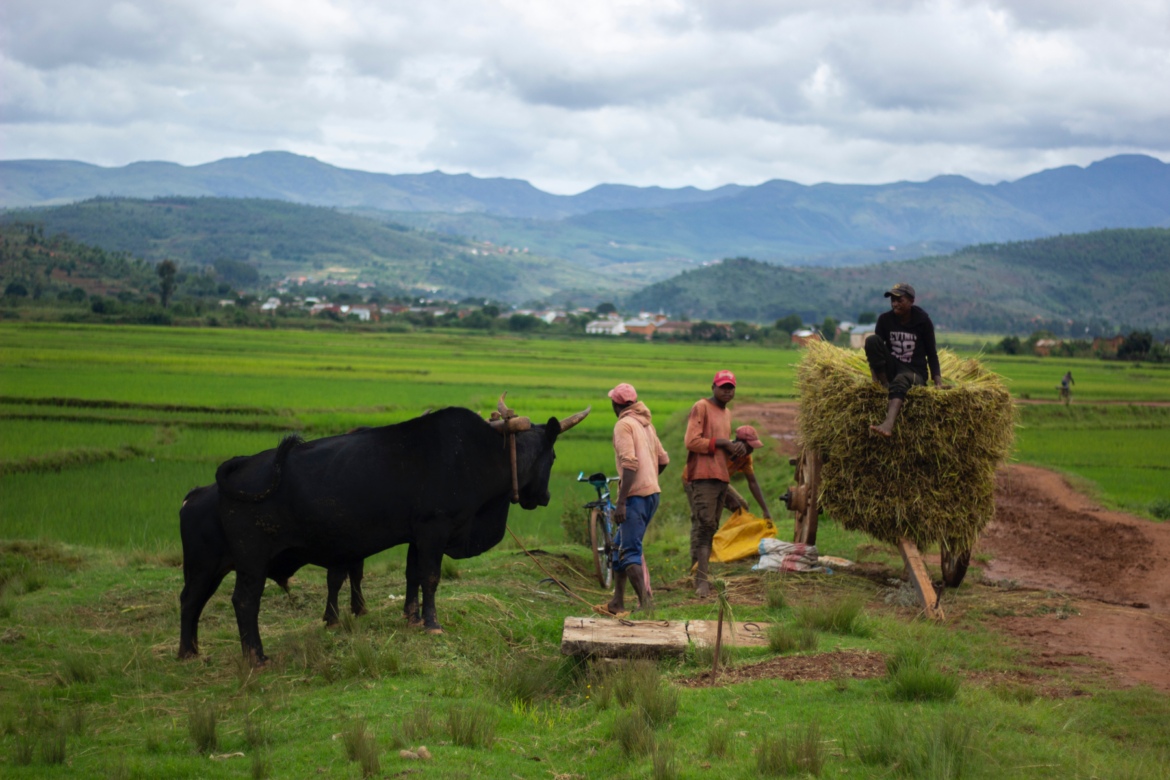When traveling Madagascar you’re bound to hear about the zebu a lot. The cattle are at the center of Malagasy life, and it has great cultural significance. For many families, the zebu makes the difference between life and death, poverty and wealth. But the importance of zebus does not stop there. The Malagasy people and the zebu are intertwined throughout Madagascar’s history.
In this post, I hope to create a deeper understanding of why the zebu is such a big part of the worldview of a Malagasy.
What is a Zebu?
A zebu is a kind of cattle characterized by a hump on its back. It’s widely common on the African, and South American continents. Zebus are adapted to tropical climates and, in general, harsh conditions. Their resistance to drought and ability to thrive in hot and dry environments make them perfect for use all over Madagascar.
They’re primarily used as riding- and draught animals, for milk, and beef. The Zebu is never wasted. They are an important part of the family, and after living a long life, every piece of them is used for a purpose.
When looking at a zebu, you might find a comparison to the camel. The hump on the back is what gives the zebu a significant look. But don’t be fooled. A camel’s hump restores water in dry periods, and while that would be practical for a zebu, its hump does not have the same function. A zebus hump consists of muscle and vertebrae, and truth be told, no one knows what it’s for – apart from eating.
What is the Zebu used for in Madagascar?
The Malagasy zebu is used in many ways. For a rural family, the zebu is the most important tool in the house, and it is often the reason why they’re able to survive. More than 60% of Madagascar’s population lives in rural areas with limited access to sanitation and electricity. The primary way of living is agriculture, and since Madagascar is severely underdeveloped, you’d rarely find machines outside the cities. Here is where Zebus come in handy in many ways.
Transport
Without roads, cars, bikes, and even access to gasoline, Zebus are the primary tool for transportation. In the countryside, you will no doubt see Zebus transporting heavy goods, children on the way to school, and crops from the field. Without the Zebu, many things would be impossible for the rural Malagasy family.
Milk
Zebus produce milk like the dairy cattle we know from home, but their milk contains more fat and carbohydrates than dairy cows’. The milk is precious and is transformed into yogurt, cheese, and butter for conservation. Large areas of Madagascar has a scarcity of food due to harsh weather condition, but Zebu’s milk is a reliable source of nutrition – even throughout a drought.
Working the Fields
Farming is a tough job. Usually, the entire family, including kids, is working the fields to ensure an outcome. And they’re working side by side with their zebu. A zebu’s ability to work hard and pull loads is impressive. With a plow and a zebu, a Malagasy family is spared much devastating work.
Meat & utilities
When a zebu has grown old working for its family and the time has come to pass on, every piece of its remains is used. The meat for eating, the skin for leather, and the horns for utilities such as forks and knives.The fat becomes candles, the bones fertilizer, and the hides musical instruments. Nothing’s left without a purpose.
To all animal activists out there, who might take offense at the use of zebus, it’s important to remember that it is a tool for survival in Madagascar. And rest assured, a man’s zebu is his most precious possession. The zebu receives better treatment from its family than they allow for themselves.
Why is the Zebu Important to Malagasy People?
A zebu is valuable, for more than its above-mentioned use. As if those aren’t enough. No, it has significant cultural and financial value as well. Historically, a man’s worth is measured by the number of zebus he owns. Zebus have always been the center of wealth and glory. To this day, owning a zebu carries much status. It is still common for a Malagasy man to place his capital in zebu, as it is considered the best investment.
When talking to Malagasys, the zebus tend to claw its way into every old story. In the ancient Merina Kingdom, the zebu was the most precious offering a Merina man could make to the kings and queens, as well as it is the most precious sacrifice he could make to his ancestors. In the Bara community, a man could not marry a woman until he had presented her family with a zebu. Those not fortunate enough to own one would have to steal it, which became an accepted tradition for marriage.
In many tribes, an honorable man will be followed to death by a number of his zebus depending on his wealth. They will be sacrificed and buried with him. For many Malagasy, that’s the most honorable way to go.
Want to learn more about Malagasy culture? I’ve got several posts on the subject!


1 comment
Hi Karen
It is intresting to read about your experience and all of your knowledge.
I Think it Would be wonderful to visit Madagaskar some Day.
Have a good Day.